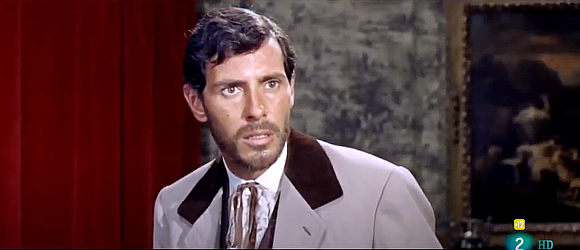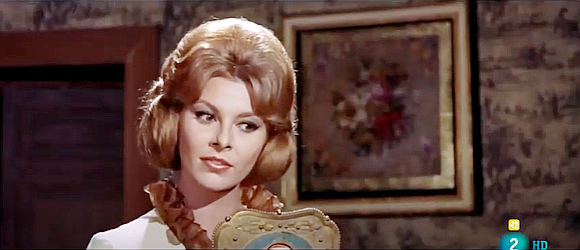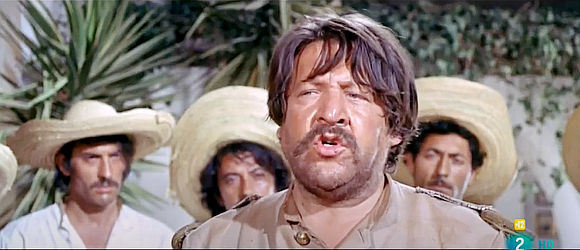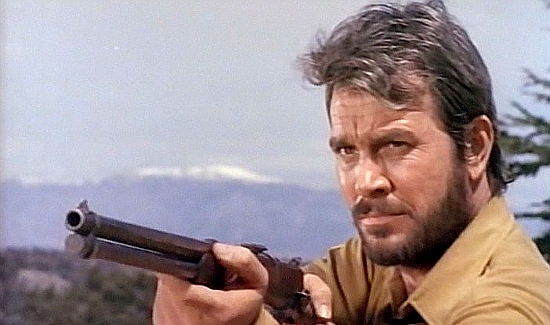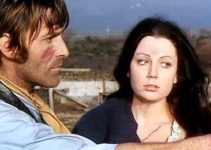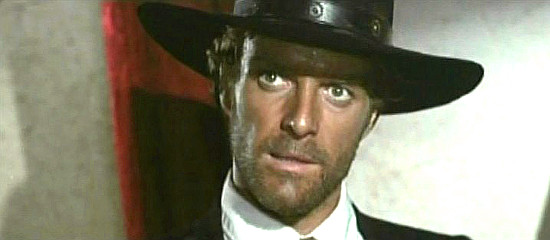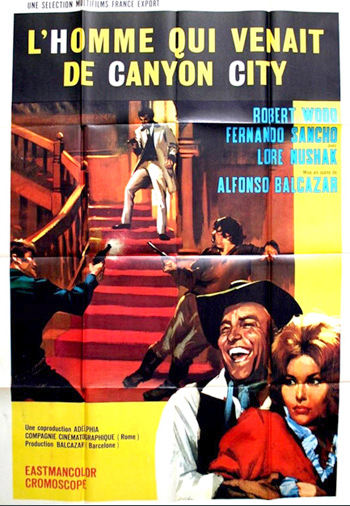 Fernando Sancho is Carrancho and Luis Davila is Ray, two prisoners who make an escape while chained together.
Fernando Sancho is Carrancho and Luis Davila is Ray, two prisoners who make an escape while chained together.
They reach the Rio Grande. Carrancho wants to go to Mexico, where everyone can live a quiet and peaceful life.
Davila prefers Colorado, but agrees with Carrancho’s offer to flip a coin to determine their destinaton.
He doesn’t know at the time that Carrancho is flipping a two-headed coin.
So Mexico it is, where both find employment with the rich and powerful Jim Morton (Robert Woods) — Davila as a fast gun who joins his band of henchmen, Carrancho as a cook.
Both are intrigued by the fact that $70,000 in cash was just delivered to their new boss and wouldn’t mind getting their hands on the money.
As for that happy and peaceful life in Mexico … well, it certainly isn’t true for the Mexicans working Morton’s mine.
With the help of his brutal henchmen, they’re exploited for his gain. The men are whipped and even killed for small transgressions; the women are harassed and raped by Morton’s men.
Having seen enough, Carrancho proclaims that it’s time for a revolution, dons an officer’s uniform and declares himself general.
Ray winds up turning against Morton too, partly because he has a pretty wife who’s every bit as unhappy and as much a slave as the Mexican peons.
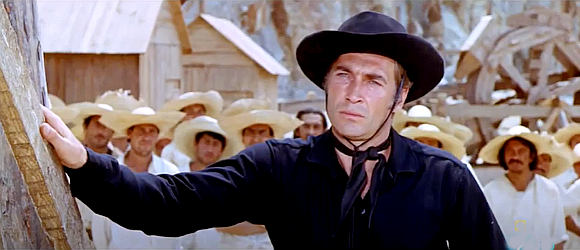
Luis Davila as Ray, listening to the Mexicans being threatened if they tell the truth about working conditions in Man From Canyon City (1965)
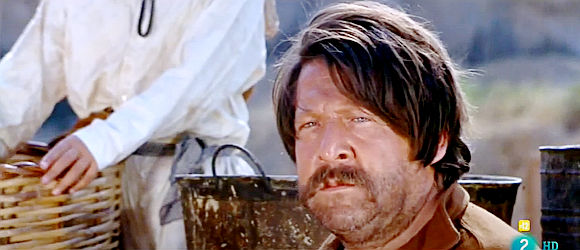
Fernando Sancho as Carrancho, Morton’s cook, watching peons being mistreated in Man From Canyon City (1965)
This is a followup to 1965’s “Five Thousand Dollars for One Ace,” a film that made Sancho a star in Spain and the one in which he first portrayed a character named Carrancho.
This is the better film, grittier, more violent and more engaging, partly because Sancho delivers one of his best Spaghetti performances.
He’s the forever smiling, forever devious character you can’t help but like, whether he’s conning Davila with his two-faced coin , using the pretty Mexican girls to lure Morton’s men into a trap or pretending to be a blind sombrero salesman in order to gain access to a “gringo” store so his men can steal its stock of rifles.
And in one of the film’s better scenes, he holds a trial for two Morton men who have killed three peons. His jury consists of the dead peons. Surprise, they don’t object to Carrancho’s call for the death penalty.
This also marked the first Spaghetti for Loredana Nusciak. And Robert Woods appears to relish the opportunity to play the villain after being the hero in his Spaghetti debut.
Oh, and there’s also a neat ending involving that $70,000.
Directed by:
Alfonso Balcazar
Cast:
Fernando Sancho … Carrancho
Luis Davila … Ray
Robert Woods … Jim Morton
Loredana Nusciak … Viviane Barrett
as Lore Nushak
Gerard Tichy … Hargitay
Renato Baldini … Grieves
as Ryan Baldwin
Antonio Almoros … Manuel Pereda
Ely Drago … Rosario
Osvaldo Genazzani … Morton henchman
Antonio Molino Rojo … Matt
Francisco Sanz … Evaristo
Jose Manuel Martin … Esteban, informer
Also with: Oscar Pellicer, Gaspar “Indio” Gonzalez, Cesar Ojinaga, Auncion Vitoria, Victor Fuente, Oscar Carreras, Juan Miguel Solano, Angel Mall, Renato Terra Caizzi, Juan Fernandez
Runtime: 91 min.
aka:
L’uomo che viene de Canyon City
Que viva Carrancho!
Music: Angelo Francesco Lavagnino
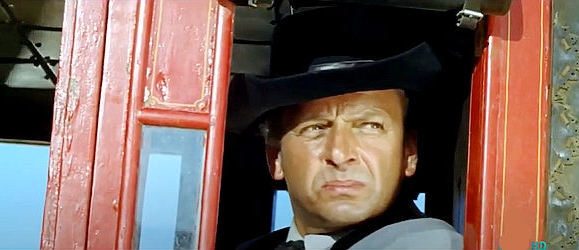
Gerald Tichy as Hargitay, a man arriving with $70,000 and a warning for mine owner Jim Morton in Man From Canyon City (1965)
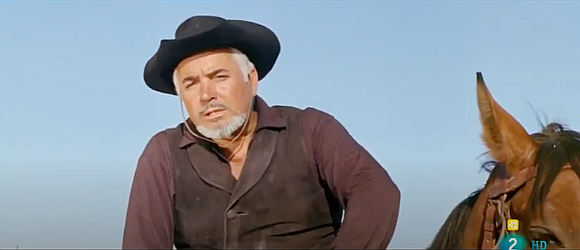
Renato Baldini (Ryan Baldwin) as Grieves, lead henchman for mine owner Jim Morton in Man From Canyon City (1965)
Memorable lines:
Sorry, but I watched a non-English version of this film.
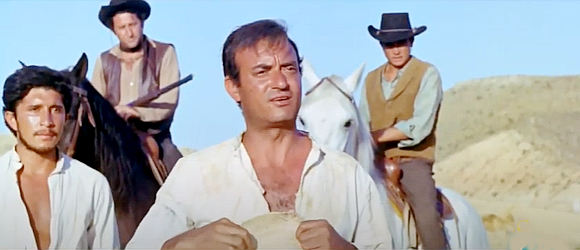
Antonio Almoros as Manuel Pereda, one of the leaders among the Mexican peons in Man From Canyon City (1965)
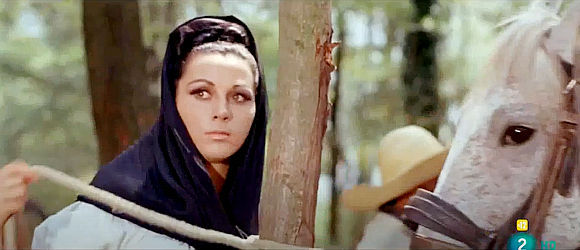
Ely Drago as Rosario, a victim of Morton’s men, helping Carrancho pull off a trap in Man From Canyon City (1965)
Trivia:
* Loredana Nusciak got her start in sword and sandal films. She went on to appear in six Spaghetti Westerns, most noteably as the woman Franco Nero saves in “Django” (1966).
* An informant among the peons plays a key role in both of the Carrancho films. Here that part is played by Jose Manuel Martin, who would become a familiar face as a character actors in dozens of Spaghetti Westerns.
* Director Alfonso Balcazar quickly followed this movie with two more starring Luis Davila and Fernando Sancho, “The Man Who Came to Kill” (1965) and “Dynamite Jim” (1966).
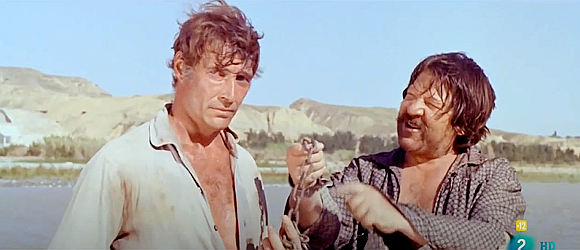
Luis Davila as Ray and Fernando Sancho as Carrancho deciding which path to take in Man From Canyon City (1965)
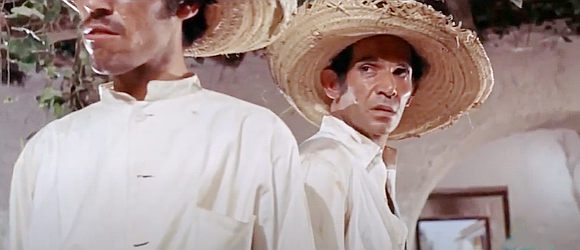
Jose Manuel Martin as Esteban, Jim Morton’s informant among the Mexican peons in Man From Canyon City (1965)
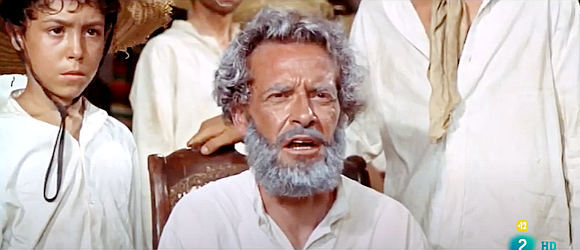
Francisco Sanz as Evaristo, an old-timer nearly lynched by Morton’s men in Man From Canyon City (1965)
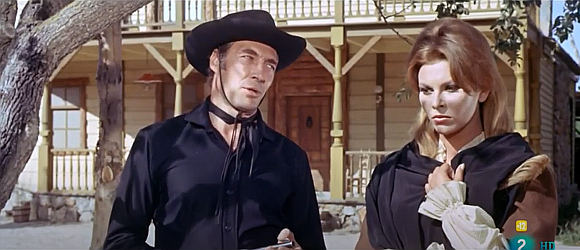
Louis Davila as Ray dispensing some six-gun wisdom to Viviane Barrett (Loredana Nusciak) in Man From Canyon City (1965)
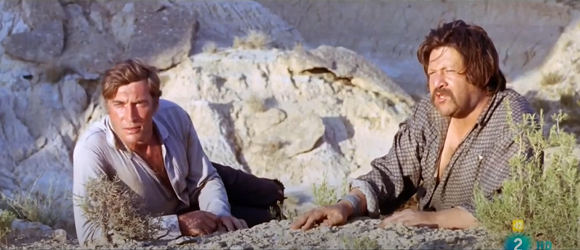
Escapees Ray (Louis Davila) and Carrancho (Fernando Sancho) learn about Morton’s $70,000 in Man From Canyon City (1965)

